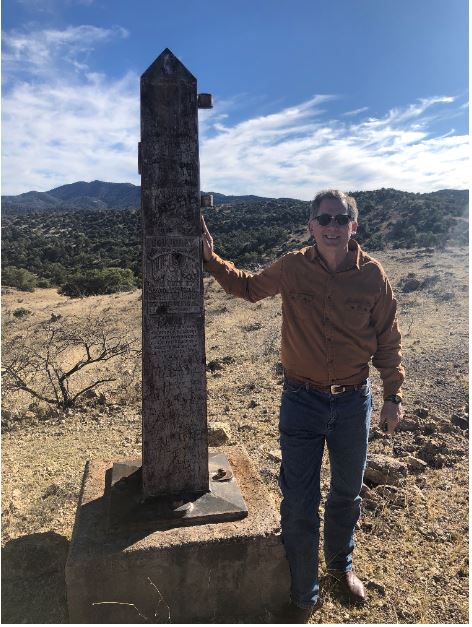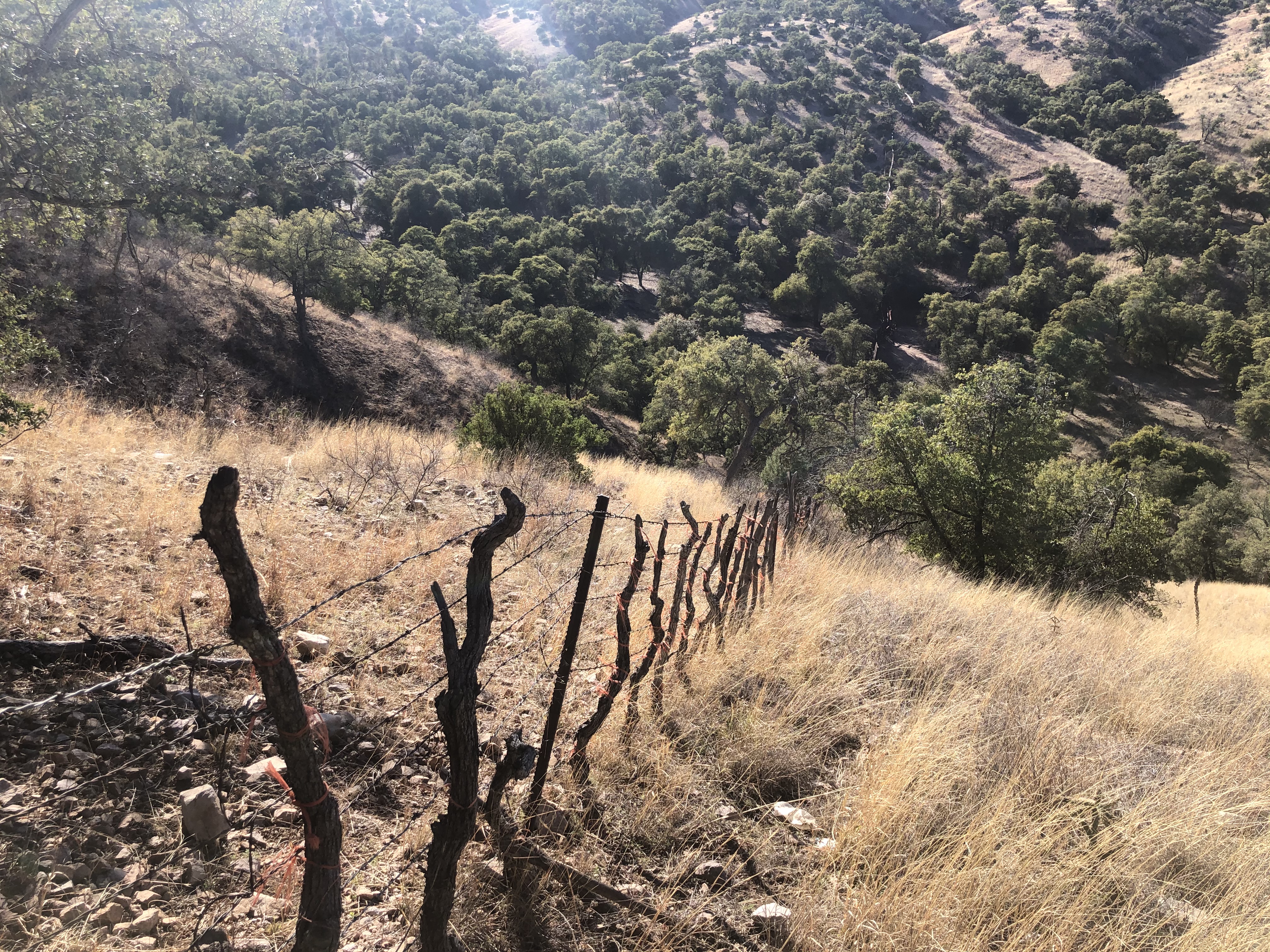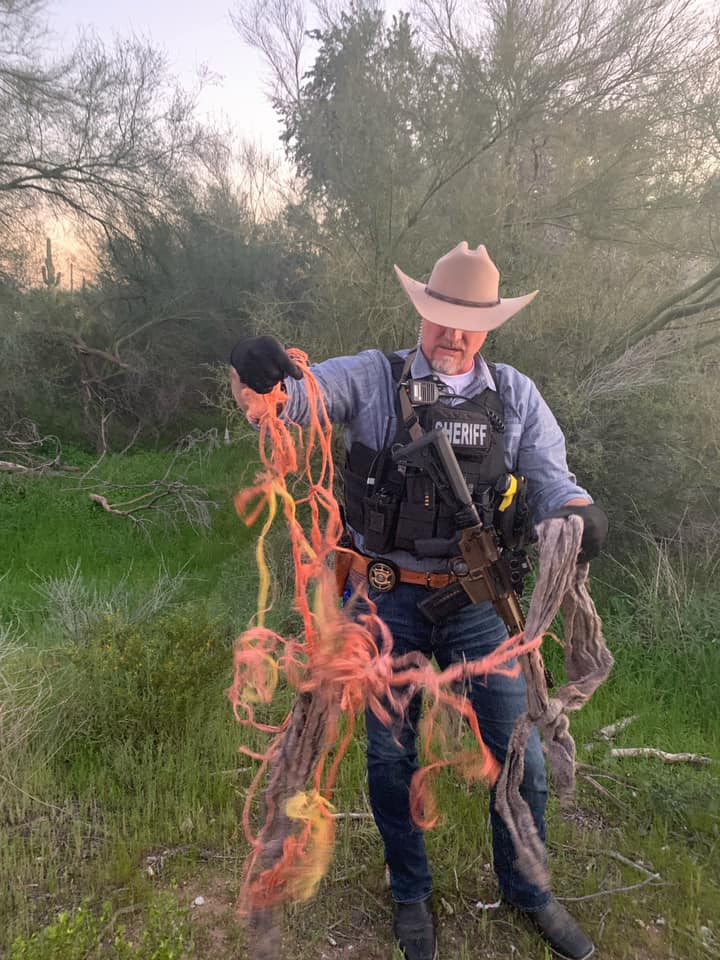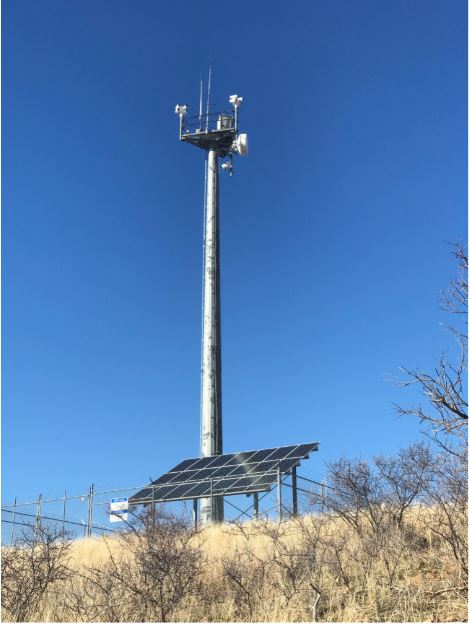Dear Friends,
This week I visited the southwest border for the sixth time in five years and saw again firsthand that border security is national security. While we are a nation of immigrants, we must also be a nation of laws.
Though the number of people attempting to cross the border is now lower than the over 100,000 who were pouring in last spring and summer, this issue is by no means resolved. Border crossings during the winter months are generally between 12,000 and 18,000, and currently, there are double the amount of people crossing each month than that historic average.
Though this was my sixth trip to the border, it was my first to Arizona, and I saw the specific challenges to border security out in the high desert. This part of the southwest border is comprised of wilderness areas, national parks, private ranchlands, and a 2.3 million-acre Native American reservation situated directly on the border.

This photo was taken 2.5 miles west of Nogales, Arizona right on the border between Mexico and the United States. |

Looking west down the slope along the border. Mexico to left and the United States to the right. |
This rough terrain means that the journey across the border is generally not suitable for families. The people apprehended in this sector are mostly young men, about half from Mexico and half from Central America. They’re walking 60 miles through the desert carrying water, all dressed in camouflage clothes, all wearing carpet shoes so they don’t leave tracks. This is a major human and drug smuggling operation that funnels through the border and into Arizona and the rest of the country.

Sheriff Lamb from Pinal County, Arizona showing the remains of a makeshift backpack left by a drug runner. |
I conducted a tour of the Nogales border wall with Arizona ranchers and had an extensive discussion with these border-area cattle ranchers on the immense criminal gang activity taking place on their land. To me, it is abundantly clear that our border security officers need more manpower and judges with an effective set of barriers (depending on the terrain topography) including a wall, fencing, sophisticated technology, and other means to protect the citizens of our country.
In the high desert, fencing can be difficult due to the rugged landscape. This constraint makes technology especially vital, and Integrated Fixed Towers (IFTs) with parallel road systems are utilized to allow our agents to get as close to the border as possible.

An Integrated Fixed Tower (IFT) west of Nogales, Arizona. |
I am committed to fixing our broken immigration system while ensuring the safety and security of the American people. I look forward to working with our House and Senate Leadership and as well as the president to address these pressing issues.
Sincerely,

Representative French Hill
|
My Thoughts and Observations
|
During my visit to Arizona, I was able to record some of my thoughts and observations to share with you. Click HERE or on the image below to watch the video I recorded directly from the border.
| Stemming the Flow of Drugs and Crime |
Arizona's Pinal County is about sixty miles north of the border and sits directly above the Native American Tribe, Tohono O’odham Nation’s Reservation. This county is quite large, encompassing 5,3764 square miles, which is roughly the size of the state of Connecticut.
This county faces a daily influx of drugs and human trafficking that can be difficult to stem with such a large area to cover and a relatively small number of law enforcement officers.
Pinal County Sheriff Mark Lamb briefed me on this situation and outlined how they stem the flow of crime into their county so that it does not spread into the rest of the United States. These men and women are truly our front line defense, and I commend their dedication to keeping us safe.
| meeting with Arizona ranchers |
Cattle ranchers on the border in Arizona struggle to keep their land clear of the criminal gang activity, human trafficking, and drug smuggling that invades their land and threatens their livelihood each day. Many of them favor a robust border wall to keep this criminal activity off their property and out of the county.
Above is a photo of Jim Chilton who has been married to his wife, Sue, for an amazing 58 years. His family has been ranching along the Arizona-Mexico border since 1885 before Arizona was even a state. Here, he is holding a photo of himself crawling under the border fence, which demonstrates exactly how easy it is for criminals to smuggle people or drugs onto his land.
| Meeting with the Tohono O’odham Nation |
| Native American Reservation on Our Southwest Border |
Working with the people who live on the border, including Native American tribes like the Tohono O’odham Nation in Arizona, is vital to finding an equitable solution for the crossings on our southwest border.
I learned that the Tohono O’odham Nation, while they are opposed to the full 30-foot bollard fence on their part of the 60-mile border, have been very supportive of the tower technology and allowed our Customs and Border Protection (CBP) agents to actually set up forward operating bases on their land.
Congressman Andy Biggs, Congressman Paul Gosar, Congressman Russ Fulcher, Congressman Glenn Grothman and I met with the Chairman and Tribal Council (pictured above) of the Tohono O’odham Nation at the San Miguel Gate on the reservation lands along the border with Mexico to discuss the critical need for stopping the illegal flow of drugs into our country.
IFTs are designed to provide high technology surveillance across the desert of the reservation, which increases security for both the tribal lands and the Tucson region. We met with CBP to discuss the locations of the seven new IFTs to be constructed. Congress should always partner with and support our Border Protection, which prioritizes our safety and security.
|
|

